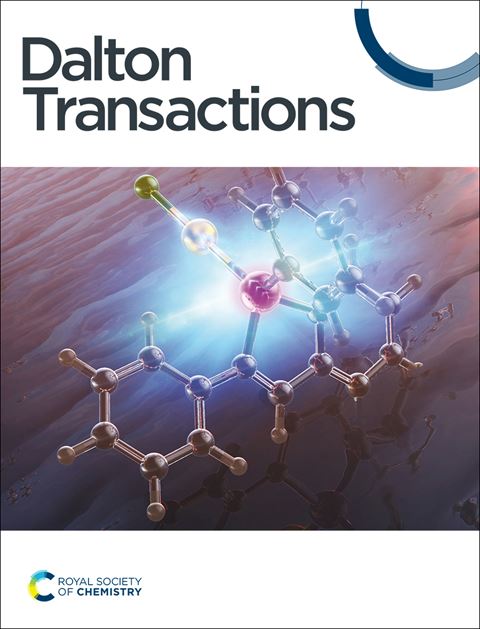自组装多染料敏化铒单分子促进溶液中能量转移的上光转换。
IF 3.5
3区 化学
Q2 CHEMISTRY, INORGANIC & NUCLEAR
引用次数: 0
摘要
有效的近红外(NIR)可见(VIS) light-upconversion应该结合大型吸收系数NIR和大规模量子收益率加州大学,这样整体亮度BUC =NIRUC是最大的。依靠线性光学,几个光子被强吸收染料收集,储存在长寿命的中间激发态,最后利用简单或双算子性质的机制堆积起来。在单个分子中实现可检测的线性光上转换的小型化是具有挑战性的,因为热振动浴的存在增加了非辐射松弛,并将量子产率限制在10−9≤0 ~ 10−6。因此,一个可接受的亮度要求在三价镧系发光团周围连接最多的阳离子菁染料。利用严格的自组装过程带来的热力学优势,三个阳离子IR-780染料可以在三核[ZnErZn(L5)3]10+三链螺旋结构中围绕单个Er(III)阳离子排列。室温下,在乙腈中801 nm处的近红外激发通过能量传递上转换(ETU)机制诱导光上转换。最终的绿色Er(2h11 / 2,4s3 /24I15/2)发光量为3.6,亮度达到创纪录的BUC = 2.8 (Pexc = 25),实现了分子上转化。本文章由计算机程序翻译,如有差异,请以英文原文为准。
Self-assembled multidyes-sensitized erbium single molecules for boosting energy transfer light-upconversion in solution.
Efficient near-infrared (NIR) to visible (VIS) light-upconversion should combine large absorption coefficients NIR with massive quantum yields UC so that the overall brightness BUC = NIRUC is maximum. Relying on linear optics, several photons are collected by strongly absorbing dyes, stored on long-lived intermediate excited states and finally piled up using mechanisms of simple or double operator natures. The miniaturization to implement detectable linear light-upconversion in a single molecule is challenging because of the existence of the thermal vibrational bath which increases non-radiative relaxation and limits quantum yields to 10−9 ≤ UC ≤ 10−6. An acceptable brightness thus requires the connection of a maximum of cationic cyanine dyes around trivalent lanthanide luminophores. Taking advantage of the thermodynamic benefit brought by strict self-assembly processes, three cationic IR-780 dye could be arranged around a single Er(III) cation in the trinuclear [ZnErZn(L5)3]10+ triple-stranded helicate. NIR excitation at 801 nm in acetonitrile at room temperature induces light-upconversion via the energy transfer upconversion (ETU) mechanism. The final green Er(2H11/2,4S3/24I15/2) emission with UC = 3.610−8 shows a record brightness of BUC = 2.810−2 M−1cm−1 (Pexc = 25 Wcm−2) for a molecular-based upconversion process.
求助全文
通过发布文献求助,成功后即可免费获取论文全文。
去求助
来源期刊

Dalton Transactions
化学-无机化学与核化学
CiteScore
6.60
自引率
7.50%
发文量
1832
审稿时长
1.5 months
期刊介绍:
Dalton Transactions is a journal for all areas of inorganic chemistry, which encompasses the organometallic, bioinorganic and materials chemistry of the elements, with applications including synthesis, catalysis, energy conversion/storage, electrical devices and medicine. Dalton Transactions welcomes high-quality, original submissions in all of these areas and more, where the advancement of knowledge in inorganic chemistry is significant.
 求助内容:
求助内容: 应助结果提醒方式:
应助结果提醒方式:


